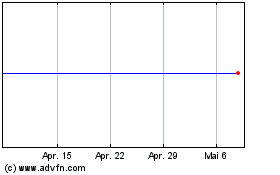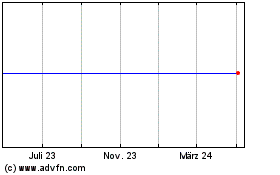FORM 6-K
SECURITIES
AND EXCHANGE COMMISSION
Washington,
D.C. 20549
Report
of Foreign Issuer
Pursuant
to Rule 13a-16 or 15d-16 of
the
Securities Exchange Act of 1934
For the
month of May 2023
Commission
File Number: 001-11960
AstraZeneca PLC
1
Francis Crick Avenue
Cambridge
Biomedical Campus
Cambridge
CB2 0AA
United
Kingdom
Indicate
by check mark whether the registrant files or will file annual
reports under cover of Form 20-F or Form 40-F.
Form
20-F X Form 40-F __
Indicate
by check mark if the registrant is submitting the Form 6-K in paper
as permitted by Regulation S-T Rule 101(b)(1):
Indicate
by check mark if the registrant is submitting the Form 6-K in paper
as permitted by Regulation S-T Rule 101(b)(7): ______
Indicate
by check mark whether the registrant by furnishing the information
contained in this Form is also thereby furnishing the information
to the Commission pursuant to Rule 12g3-2(b) under the Securities
Exchange Act of 1934.
Yes __
No X
If
“Yes” is marked, indicate below the file number
assigned to the Registrant in connection with Rule 12g3-2(b):
82-_____________
AstraZeneca PLC
INDEX
TO EXHIBITS
1. Farxiga extended in the US for heart failure
9 May
2023
Farxiga extended in the US to reduce
risk of cardiovascular death and hospitalisation for heart failure
to a broader range of patients
FDA approval means patients with heart
failure can benefit from Farxiga
regardless of left ventricular ejection fraction
status
AstraZeneca's Farxiga (dapagliflozin)
has been approved in the US to reduce the risk of cardiovascular
(CV) death, hospitalisation for heart failure (hHF) and urgent
heart failure (HF) visits in adults with HF. The approval
by the Food and Drug
Administration (FDA) was based on positive results from
the DELIVER Phase III trial.1 Farxiga was previously approved in
the US for adults with HF with reduced ejection
fraction (HFrEF).
Ruud Dobber, Executive Vice-President, BioPharmaceuticals Business
Unit, AstraZeneca, said: "Approximately half of heart failure
patients die within five years of diagnosis, highlighting an urgent
unmet need for well-tolerated treatment options that can bring
life-saving benefits and reduce the risk of cardiovascular death.
The approval of Farxiga in the US not only reinforces
AstraZeneca's commitment to reducing the burden of this
complex and life-threatening disease, but will help patients across
the full spectrum of heart failure lead healthier
lives."
HF is a
chronic, long-term condition that worsens over time2 and affects
almost seven million people in the US.3 It is also the
leading cause of hospitalisation for those over 65 years and
represents a significant clinical and economic burden.4 Approximately
half of all HF patients have HF with mildly reduced ejection
fraction (HFmrEF) or HF with preserved ejection fraction
(HFpEF)5 and these
patients are not only at greater risk of death and hospitalisations
but experience an especially high burden of symptoms and physical
limitations, and a poor quality of life.6
The data from the DELIVER Phase III trial, published
in The
New England Journal of Medicine, showed Farxiga reached
a statistically significant and clinically meaningful early
reduction in the primary composite endpoint of CV death or
worsening HF in patients with HF with HFmrEF or
HFpE.F1 The
results from a pre-specified, pooled analysis of the DAPA-HF and
DELIVER Phase III trials, published in Nature
Medicine, showed that the treatment effect
of Farxiga on the
composite endpoint of cardiovascular death, hospitalisation for
heart failure or urgent heart failure was consistent across
the left ventricular ejection
fraction (LVEF) range
and established Farxiga as the
first sodium-glucose cotransporter 2 (SGLT2) inhibitor to
demonstrate a mortality benefit.7
Farxiga is approved for
the treatment of patients with type-2 diabetes (T2D), HFrEF and
chronic kidney disease (CKD) in more than 100 countries around the
world including the US, the European Union (EU), China and Japan.
It has most recently received regulatory approvals in the EU, Great
Britain, Japan and Turkey to extend the HF indication to include
patients across the full LVEF range.
Notes
HF
HF is a
chronic, long-term condition that worsens over time.2 It affects
nearly 64 million people globally8 and is
associated with substantial morbidity and mortality.9 Chronic HF is
the leading cause of hospitalisation for those over the age of 65
and represents a significant clinical and economic
burden.4 There are
several types of HF often defined by LVEF, a measurement of the
percentage of blood leaving the heart each time it contracts,
including: HFrEF (LVEF less than or equal to 40%), HFmrEF (LVEF
41-49%) and HFpEF (LVEF greater than or equal to
50%).10 Approximately
half of all HF patients have HFmrEF or HFpEF,5 with few
therapeutic options available.6
DELIVER
DELIVER
was an international, randomised, double-blind, parallel-group,
placebo-controlled, event-driven Phase III trial designed to
evaluate the efficacy of Farxiga, compared with placebo, in the
treatment of HF patients with LVEF greater than 40%, with or
without T2D. Farxiga was given once daily in
addition to background therapy (regional SoC for all comorbidities,
including diabetes and hypertension, with the exception of
concomitant use of a sodium-glucose cotransporter 2 (SGLT2)
inhibitor). DELIVER is the
largest clinical trial to date in HF patients with LVEF above 40%,
with 6,263 randomised patients.11
The
primary composite endpoint was the time to first occurrence of CV
death, hHF or an urgent HF visit. Key secondary endpoints include
the total number of HF events (hHF or urgent HF visit) and CV
death, change from baseline in the total symptom score of the KCCQ
at eight months, time to the occurrence of CV death and time to the
occurrence of death from any cause.11
Farxiga
Farxiga (dapagliflozin) is a first-in-class, oral,
once-daily SGLT2 inhibitor. Research has shown Farxiga's efficacy in preventing
and delaying cardiorenal disease, while also protecting the organs
- important findings given the underlying links between the heart,
kidneys and pancreas.12-14 Damage
to one of these organs can cause the other organs to fail,
contributing to leading causes of death worldwide, including T2D,
HF and CKD.15-17
AstraZeneca in CVRM
Cardiovascular,
Renal and Metabolism (CVRM), part of BioPharmaceuticals, forms one
of AstraZeneca's main disease areas and is a key growth driver for
the Company. By following the science to understand more clearly
the underlying links between the heart, kidneys and pancreas,
AstraZeneca is investing in a portfolio of medicines for organ
protection and improving outcomes by slowing disease progression,
reducing risks and tackling co-morbidities. The Company's ambition
is to modify or halt the natural course of CVRM diseases and
potentially regenerate organs and restore function, by continuing
to deliver transformative science that improves treatment practices
and CV health for millions of patients worldwide.
AstraZeneca
AstraZeneca
(LSE/STO/Nasdaq: AZN) is a global, science-led biopharmaceutical
company that focuses on the discovery, development, and
commercialisation of prescription medicines in Oncology, Rare
Diseases, and BioPharmaceuticals, including Cardiovascular, Renal
& Metabolism, and Respiratory & Immunology. Based in
Cambridge, UK, AstraZeneca operates in over 100 countries and its
innovative medicines are used by millions of patients worldwide.
Please visit astrazeneca.com and
follow the Company on Twitter @AstraZeneca.
References
1.
Solomon S, et al. Dapagliflozin in heart failure with mildly
reduced or preserved ejection fraction. N Engl J Med. 2022;
387(12):1089-1098.
2. Cleveland Clinic [Internet]. Heart failure [cited
2023 Mar 14]. Available from: https://my.clevelandclinic.org/health/diseases/17069-heart-failure-understanding-heart-failure.
3. Tsao
C., et al. Heart Disease and Stroke Statistics-2022 Update: A
Report From the American Heart Association. Circulation.
2023;144(8):e7, e431-444.
4. Azad
N, et al. Management of chronic heart failure in the older
population. J Geriatr
Cardiol. 2014;11(4):329-337.
5. McDonagh T, et al. 2021 ESC Guidelines for the
diagnosis and treatment of acute and chronic heart
failure. Eur Heart
J.
2021;00:1-128.
6.
Kosiborod MN, et al. The effects of dapagliflozin on symptoms,
function and quality of life in patients with heart failure and
mildly reduced or preserved ejection fraction: results from the
DELIVER Trial. Presented at: American Heart Association (AHA)
Scientific Sessions 2022, 5-7 November 2022, Chicago, Illinois,
USA.
7.
Jhund P, et al. Dapagliflozin across the range of ejection fraction
in patients with heart failure: a patient-level, pooled
meta-analysis of DAPA-HF and DELIVER. Nat Med. 2022;
28(9):1956-1964.
8. Vos
T, et al. Global, regional, and national incidence, prevalence, and
years lived with disability for 328 diseases and injuries for 195
countries, 1990-2016: A systematic analysis for the Global Burden
of Disease Study 2016. Lancet. 2017;390(10100):1211-1259.
9. Mozaffarian
D, et al. Heart Disease and Stroke Statistics-2016 Update: A Report
From the American Heart Association. Circulation. 2016;133(4):e38-360.
10. Heidenreich
PA et al. 2022 AHA/ACC/HFSA Guideline for the Management of Heart
Failure: A report of the American College of Cardiology/American
Heart Association Joint Committee on Clinical Practice
Guidelines. J Am Coll
Cardiol.
2022;79(17):e263-421.
11. Solomon
SD, et al. Dapagliflozin in heart failure with preserved and mildly
reduced ejection fraction: rationale and design of the DELIVER
trial. Eur J Heart
Fail. 2021;23(7):1217-1225
12. McMurray
JJV, et al. Dapagliflozin in patients with heart failure and
reduced ejection fraction. N Engl J
Med. 2019;381(21):1995-2008.
13. Heerspink
HJL, et al. Dapagliflozin in patients with chronic kidney
disease. N Engl J
Med. 2020;383(15):1436-1446.
14. Wiviott
SD, et al; for the DECLARE-TIMI 58 Investigators. Dapagliflozin and
cardiovascular outcomes in type 2 diabetes [article and
supplementary appendix]. N
Engl J Med. 2019;380(4):347-357.
15. Mayo Clinic [Internet]. Heart failure [cited 2023
Mar 14]. Available from: https://www.mayoclinic.org/diseases-conditions/heart-failure/symptoms-causes/syc-20373142.
16. Centers for Disease Control and Prevention (CDC)
[Internet]. A snapshot: Diabetes in the United States [cited 2023
Mar 14]. Available from: https://www.cdc.gov/diabetes/library/socialmedia/infographics/diabetes.html.
17. National Institute of Diabetes and
Digestive and Kidney Diseases (NIDDK) [Internet]. Heart disease
& kidney disease [cited 2023 Mar 14]. Available
from: https://www.niddk.nih.gov/health-information/kidney-disease/heart-disease.
Adrian Kemp
Company Secretary
AstraZeneca PLC
SIGNATURES
Pursuant
to the requirements of the Securities Exchange Act of 1934, the
Registrant has duly caused this report to be signed on its behalf
by the undersigned, thereunto duly authorized.
Date:
09 May 2023
|
|
By: /s/
Adrian Kemp
|
|
|
Name:
Adrian Kemp
|
|
|
Title:
Company Secretary
|
AstraZeneca (NYSE:AZN)
Historical Stock Chart
Von Mär 2024 bis Apr 2024

AstraZeneca (NYSE:AZN)
Historical Stock Chart
Von Apr 2023 bis Apr 2024
